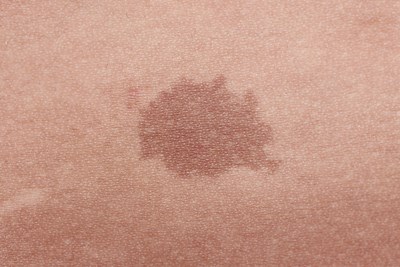Just because you were born with a birthmark doesn’t mean you’re stuck with it forever. This can be particularly important if you have especially large or obvious birthmarks. Some types of birthmarks, such as the port wine stain, are likely to appear on the face and can be pretty good sized. Instead of letting self-consciousness overwhelm you or your child, check into these options for birthmark removal.
Medication
Corticosteroids can be used for minimizing birthmarks. An injection is actually given to the birthmark itself at specific points in its growth (birthmarks often get larger as you age) to minimize growth.
Beta blockers are also often successful to minimize birthmarks. They prevent the body from releasing noradrenaline, a chemical produced by stress. Normally used for lowering blood pressure, beta blockers work by reducing the amount of blood that can flow through blood vessels by narrowing those. The idea is that this works for vascular birthmarks, particularly hemangiomas that can become ulcerated and cause other problems in infancy. By cutting off some of their blood supply, the hemangioma shrinks, or at least becomes less obvious. Propanol, an oral beta blocker, has been used, as has Timolol, a topical option. Make sure to discuss the risks of using beta-blockers with your doctor before starting treatment, particularly if it’s for a child. Using beta blockers in this way doesn’t have as much research behind it as using them for blood pressure does.
Surgery
Even if the beta blocker successfully gets rid of a large birthmark, it can still leave a few reminders behind. Once the hemangioma goes away, the skin may seem stretched, swollen, or otherwise abnormal. While this is likely preferable to a large red lump on your face, it can still be hard to deal with. Cosmetic surgery can adjust this skin to smooth things over. In some cases, surgery is the best option to shoot for right from the beginning. Some hemangiomas are actually tumors that need to be removed. Other times, its placement can interfere with eating or feeding. Surgically removing these straight off the bat is rare, but occasionally necessary -- particularly when certain types of hemangiomas and nevus are there. It is important to remember the removal of certain birthmarks can cause scarring -- but this may be preferable to allowing the tumor to continue to grow, and the scarring can often be minimized.
Laser Therapy
One of the most common and successful types of birthmark removal utilizes laser therapy. As with many treatments, the sooner you start it the better the results are likely to be. Children’s skin is more susceptible to it, particularly as some birthmarks begin to change texture and become more difficult to get rid of over time. Passing through a fiber optic cable, particular types of light are sent out of a pen-like device. The laser therapist then controls exactly where and how much is sent onto the skin. The blood vessels that absorb the heat that comes from the laser are destroyed, making the birthmark lighter and sometimes even smaller. It can take several treatments, and insurance will not always pay for it. There are some potential risks, such as bruising and irritation, but those are generally short term. Talk to your dermatologist or pediatrician about the best option for you or your child.
Make Up
Of course, make up isn’t a permanent option, but there are prescription make ups that can be used to be a more successful covering, as opposed to your beauty aisle matte. Camouflage make up is often provided by charities. These folks will also offer classes and training regarding the most successful means of applying such makeup to allow for the most effective means of hiding birthmarks that have psychological effects on their wearers.




